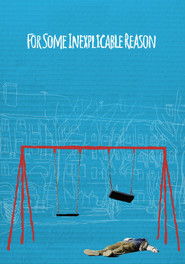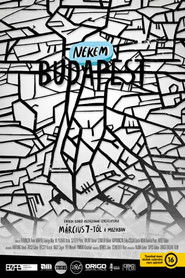detail profile juli jakab
Peran Yang Di Mainkan Juli Jakab
 Jimmy Jaguar is the story of...
Jimmy Jaguar is the story of...Jimmy Jaguár 2025
Jimmy Jaguar is the story of a demon who goes from person to person, taking control of the possessed, and carrying out acts of revenge through them.
 Its summer in Budapest high school...
Its summer in Budapest high school...Explanation for Everything 2023
It’s summer in Budapest, high school student Abel is struggling to focus on his final exams, whilst coming to the realisation that he is hopelessly in love with his best friend Janka. The studious Janka has her own unrequited love with married history teacher Jakab—who had a previous confrontation with Abel’s conservative father. The tensions of a polarised society come unexpectedly to the surface when Abel’s history graduation exam turns into a national scandal.
 No equal signs of justice can...
No equal signs of justice can...As Far As I Know 2020
No equal signs of justice can be drawn between those who are accused of a crime, those who are convicted of a crime and those who are the true offenders. That triangle always contains the accused who are not guilty and true offenders whose guilt cannot be ultimately proven. Throughout history, one of the greatest deviations in the strive towards equality has occurred in the triangle of guilt in sexual crimes, where guilt is largely proven on the basis of a woman’s will.
 In this short exploration of sensual...
In this short exploration of sensual...Cold Meridian 2020
In this short exploration of sensual audio-visual stimulation, the repeated rituals of an online performer have a transfixing effect on her viewers. What starts as an exploration of tactility, addiction and control soon descends into a nightmarish dance performance where no rules apply.
 In the horror of 1944 Auschwitz a...
In the horror of 1944 Auschwitz a...Son of Saul 2015
In the horror of 1944 Auschwitz, a prisoner forced to burn the corpses of his own people finds moral survival trying to save from the flames the body of a boy he takes for his son, seeking to give him a proper jewish burial.
 ron stands in his life as...
ron stands in his life as...For Some Inexplicable Reason 2014
Áron stands in his life as an average 29-year-old weirdo. He has many contemporary complexes, a fresh university degree, and a recent break up. His parents have to support him financially as he is still a job seeker and while Áron is agonizing on his lost love, he is always interrupted by something; it seems like he’s not the main character in his life.

 Bogi a talented opera singer student...
Bogi a talented opera singer student... The film brings together various everyday...
The film brings together various everyday... In 1913 an orphaned young woman arrives...
In 1913 an orphaned young woman arrives...
 Different genres of short stories about...
Different genres of short stories about... 34 year old Blint Szentesi does the...
34 year old Blint Szentesi does the... Vincent a reckless French boy travels...
Vincent a reckless French boy travels...